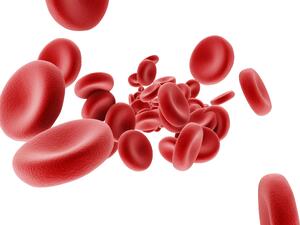Viscosity is a crucial measurement for formulation characterization as well as formulation analysis and application development. One of the most common uses of viscosity is to assess the ability to deliver pharmaceutical formulations to the patient by injection. Understanding the need for measuring viscosity in drug formulation at early stage development can prevent project elimination in late stage approval and save tremendous amounts of time and resources. Viscosity is a fundamental property of any fluid and is not only a great tool for formulation and development, it is also an excellent tool for diagnostics.
Viscosity is a fundamental property of blood and effects how well it delivers oxygen and every substrate to tissues, and how hard the heart works. The viscosity of blood influences at least three variables: its ability to clot, perfuse tissue, and vascular resistance. An abnormally high blood viscosity can be an indicator of underlying health issues and a predictor of adverse events such as the following:
- increased likelihood of thrombosis and risk of stroke (prevalently studied in conjecture with COVID 19)
- decreased ability to permeate muscle tissue resulting in inefficient glucose exchange, as studies in diabetes
- increased vascular resistance which accelerates aging and elevates blood pressure

Dr. Gregory Sloop, Associate Professor of Pathology at Idaho College of Osteopathic Medicine, refers to blood viscosity as the "most unappreciated driving force in all of medicine". Prior to COVID 19, the most important clinical application of blood viscosity was coronary heart disease. Increased blood viscosity is the most important cause of atherosclerosis, which causes coronary heart disease.
Download Dr. Sloop's discussion of blood viscosity to learn more about how it can be utilized as a diagnostic tool
Measuring viscosity of synovial fluid is also a useful diagnostics tool. Synovial fluid is also known as joint fluid which is the thick liquid that is located between your joints. The viscosity of synovial fluid can be a good indicator to help diagnose various health conditions and can be correlated to joint pain and inflammation as well. Arthritis is one potential disease that can be monitored specifically via measurements of the viscosity of synovial fluid.
We have a number of application notes where we focus on synovial fluid and various applications in the healthcare industry. Explore our applications library to read learn more.
Written by: Eden Reid, RheoSense Senior Marketing and Sales Operations


